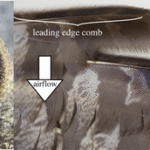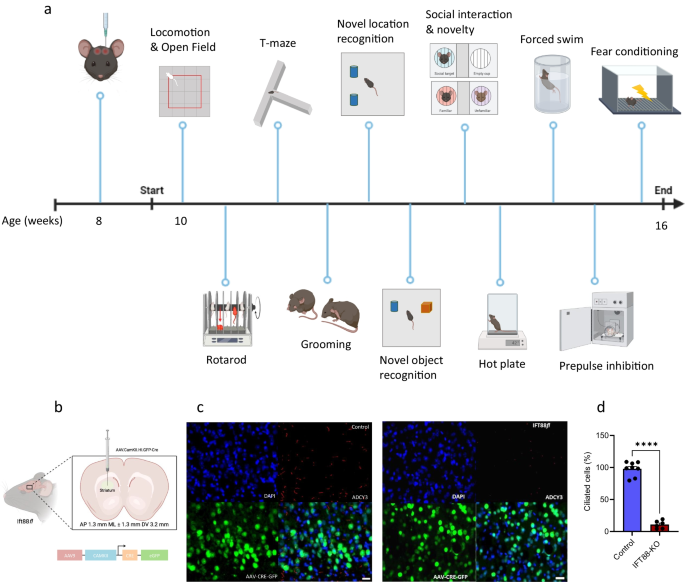2022-11-29 カリフォルニア大学バークレー校(UCB)
2020年の研究では、研究チームはCRISPRシステムを「メガファージ」と呼ばれる異常に大きなファージ群から発見した。このファージはウイルスとしては巨大だが、実際にDNAを切断するCRISPR関連タンパク質(略して「Casタンパク質」)は、広く使われている細菌由来のCas9タンパク質と比較すると、ごく小さなものであった。研究チームは、CasΦ(Cas-phi)と呼ばれるこの新しいタンパク質を、哺乳類細胞や植物細胞の遺伝子編集に応用することに成功したのだ。
研究者たちは、土壌、水生、ヒト、動物の微生物サンプルのメタゲノム解析を用いて、バクテリオファージ全体でより幅広い調査を行い、メガファージに限らず、6000種類以上のファージに広がる既知の6種類すべてのCRISPRシステムを含む予想外の多様性を発見した。これら新たに同定されたCasタンパク質は、CasΦと同様に、いずれも細菌に見られるものと比べて超小型であった。
研究チームは、新たに報告された多様なCRISPRシステムとCasタンパク質の中から、これまでに報告されたものとは異なる構造を持つ、特に小さなタンパク質に注目し、Casλ(Cas-lambda)と呼ぶことにした。
このタンパク質自体について言えば、その構造は、他のウイルス性超小型核酸酵素CasΦを含む、既知のどのCasタンパク質とも異なっている。新しいCRISPRシステムを探すとき、既に同定されているものと似ていないものを探す。このタンパク質は別格でした。ゲノム編集に適した活性を持つ、新しいタイプの超小型タンパク質なのである。
これを実験的に検証するために、研究チームは、哺乳類と植物細胞のゲノムを編集するために、実験室でCasλをテストし、最も近い比較対象として広く使われているゲノム編集Casタンパク質であるCas12aとその効率性を比較した。追加のエンジニアリングなしに、Casλは、異なる細胞タイプにわたって良好な性能を示した。
<関連情報>
- https://innovativegenomics.org/news/new-compact-genome-editors-found-in-viruses/
- https://www.cell.com/cell/fulltext/S0092-8674(22)01366-6
多様なウイルスコード化CRISPR-Casシステムには、合理的なゲノムエディターも含まれるDiverse virus-encoded CRISPR-Cas systems include streamlined genome editors
Basem Al-Shayeb,Petr Skopintsev,Katarzyna M. Soczek,Elizabeth C. Stahl,Zheng Li,Evan Groover,Dylan Smock,Amy R. Eggers,Patrick Pausch,Brady F. Cress,Carolyn J. Huang,Brian Staskawicz,David F. Savage,Steven E. Jacobsen,Jillian F. Banfield,Jennifer A. Doudna
Cell Published:NOVEMBER 23, 2022
DOI:https://doi.org/10.1016/j.cell.2022.10.020

Highlights
•CRISPR pathways encoded in diverse bacteriophage are hypercompact anti-viral systems
•Phage-encoded CRISPR systems encompass all known CRISPR-Cas types
•The Casλ enzyme’s compact structure is capable of plant and human cell genome editing
•These findings reveal a new source of CRISPR-Cas enzymes with value as genome editors
Summary
CRISPR-Cas systems are host-encoded pathways that protect microbes from viral infection using an adaptive RNA-guided mechanism. Using genome-resolved metagenomics, we find that CRISPR systems are also encoded in diverse bacteriophages, where they occur as divergent and hypercompact anti-viral systems. Bacteriophage-encoded CRISPR systems belong to all six known CRISPR-Cas types, though some lack crucial components, suggesting alternate functional roles or host complementation. We describe multiple new Cas9-like proteins and 44 families related to type V CRISPR-Cas systems, including the Casλ RNA-guided nuclease family. Among the most divergent of the new enzymes identified, Casλ recognizes double-stranded DNA using a uniquely structured CRISPR RNA (crRNA). The Casλ-RNA-DNA structure determined by cryoelectron microscopy reveals a compact bilobed architecture capable of inducing genome editing in mammalian, Arabidopsis, and hexaploid wheat cells. These findings reveal a new source of CRISPR-Cas enzymes in phages and highlight their value as genome editors in plant and human cells.


